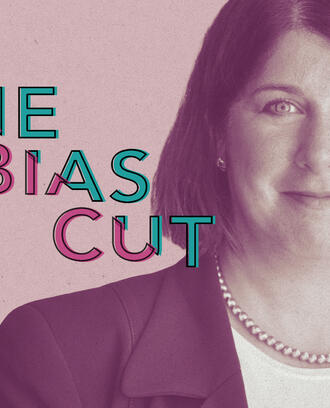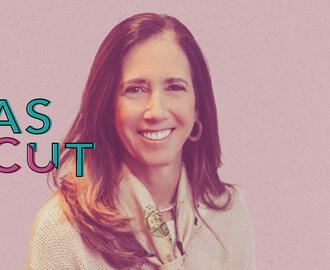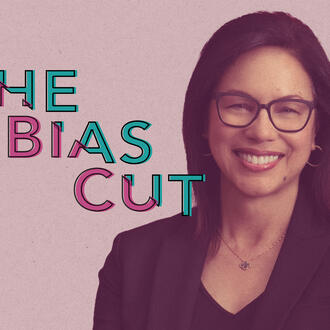This Walmart executive runs on people power and consistent routines
By
A 2024 women’s leadership study from LeanIn.org and McKinsey & Co. found that American women held 39% of corporate management positions, and women continue to fight underrepresentation when it comes to board positions and CEO roles. They also face gender bias, harassment, and opposition to their management styles.
Here’s how one MIT Sloan alumna has pushed back on those statistics and used what she’s learned along the way to help those behind her.
Astha Purohit, MBA ’16, director of product management, Walmart. Purohit’s previous roles include director of new business verticals at DoorDash, director of digital merchandising for CVS.com, and junior engagement manager at McKinsey & Co.
Given what you know now, what would you tell your younger self about being a woman in your industry?
I’d tell my younger self to trust the process, take one step at a time, and don’t be afraid to forge your own path. It’s easy to feel pressure to follow a defined career trajectory, but in reality, there isn’t one. Your career will evolve in unexpected ways, and while it might not make sense in the moment, the dots will connect when you look back. You just have to keep moving forward.
Each role in my career has been a valuable learning experience. At McKinsey, my work with retail clients sparked my passion for the industry, leading me to CVS, where I managed profit and loss for CVS.com and learned the fundamentals of building a profitable e-commerce business. At DoorDash, I expanded my skills by developing advanced machine learning models for the rapidly growing grocery delivery business. Now, at Walmart, I lead product development for customer trust and digital citizenship, reimagining what trust means for the future of retail.
Every experience, every challenge, and every role is a stepping stone. The key is to keep moving forward, stay curious, and trust that each step is bringing you closer to becoming the leader you’re meant to be.

Women's Leadership Program
In person at MIT Sloan
Register Now
Can you give an example of a time you’ve experienced or witnessed gender bias? How did it affect you professionally? What impact did it have on your job?
Early in my career, I encountered a subtle but impactful form of gender bias: being overlooked during important meetings. In one particular strategy session, I proposed a solution to a problem we were facing. My suggestion was briefly acknowledged and quickly dismissed. A male colleague made the same suggestion moments later, and the idea was embraced with enthusiasm by the group. It was frustrating and disheartening, but it made me realize that this kind of bias is often more ingrained than overt.
This experience became a valuable lesson. I learned how to be more assertive and intentional in presenting my ideas, ensuring that my contributions were heard. I also recognized the importance of spending time building strong relationships with key stakeholders and allies who could help amplify my voice.
In my current role as a people leader, I actively seek out and amplify the voice of others, especially those who may be hesitant to speak up. I also mentor the next generation of women leaders on my teams, encouraging them to advocate for themselves, build alliances, and develop strategies to navigate environments where unconscious biases may still exist.
What is the most difficult lesson you’ve learned in your professional life? In what unexpected ways did you grow from it?
Related Articles
Success isn’t just about solving problems; it’s about being in an environment where you can grow and thrive. Early in my career, I focused heavily on finding the most interesting and challenging problems. But over time, I realized that I needed to prioritize working with amazing people. When you’re surrounded by smart, kind people, the work becomes so much more enjoyable, and even the toughest problems are fun to solve with the right team.
I’ve found that the most fulfilling environments are those with a strong sense of ownership, shared purpose, and trust — much like a sports team, where everyone is striving toward the same goal. When you’re working with a team that shares the same drive, passion, and sense of ownership, not only do you enjoy your work more, but you also achieve better outcomes. This realization has fundamentally shaped how I choose roles and organizations, prioritizing cultures where collaboration with people I admire and respect leads to both more impactful results and a more enjoyable journey.
What’s one specific way you tend to your well-being, and how do you encourage well-being among your staff?
On the practical side, I’ve simplified my mornings by eating the same breakfast Monday through Friday, which I prep over the weekend. Sunday nights, I prepare a high protein breakfast with Greek yogurt, protein powder, hemp seeds, and fruit. This one meal gives me 40 – 50 grams of protein, which has been a game-changer for me, especially as a vegetarian. No matter how early my day starts or how packed my schedule is, I just grab my meal-prepped container in the morning and go. The breakfast keeps my blood sugar stable, and I stay energized through back-to-back morning meetings without feeling hungry until lunchtime.
The mindset shift that has been transformative is focusing on consistency — not perfection — with exercise. I used to struggle with going to the gym regularly, but in July I decided to shift gears and simplify my goal to just showing up to the gym three times a week. Some days it’s an intense workout and other days it’s a quick 30-minute session. But it’s the consistency that has made all the difference. It’s improved how I feel both mentally and physically, giving me more energy and a greater sense of happiness and well-being.
I encourage my team to find similar simple, sustainable habits that work for them, whether that’s a small daily routine or just prioritizing consistency over intensity. It’s about finding what supports their well-being and making it a regular part of their lives.
If you could snap your fingers and change one thing about workplaces, societal norms, or public policies that would most benefit women in the workforce, what would it be?
Establish a true meritocracy of ideas when it comes to promotions, growth opportunities, and leadership positions. Too often, promotions can be influenced by bias, whether conscious or unconscious, and those with the loudest voices or established networks are given opportunities, regardless of the merit of their ideas.
By shifting the focus to the quality of contributions and ideas, we could ensure that those with the best solutions and most innovative thinking — regardless of gender — are given the opportunity to advance. This would not only create a more equitable workplace for women but also lead to better business outcomes, as the best ideas would rise to the top.
Read next: 14 quotes for women’s leadership and growth in 2024




